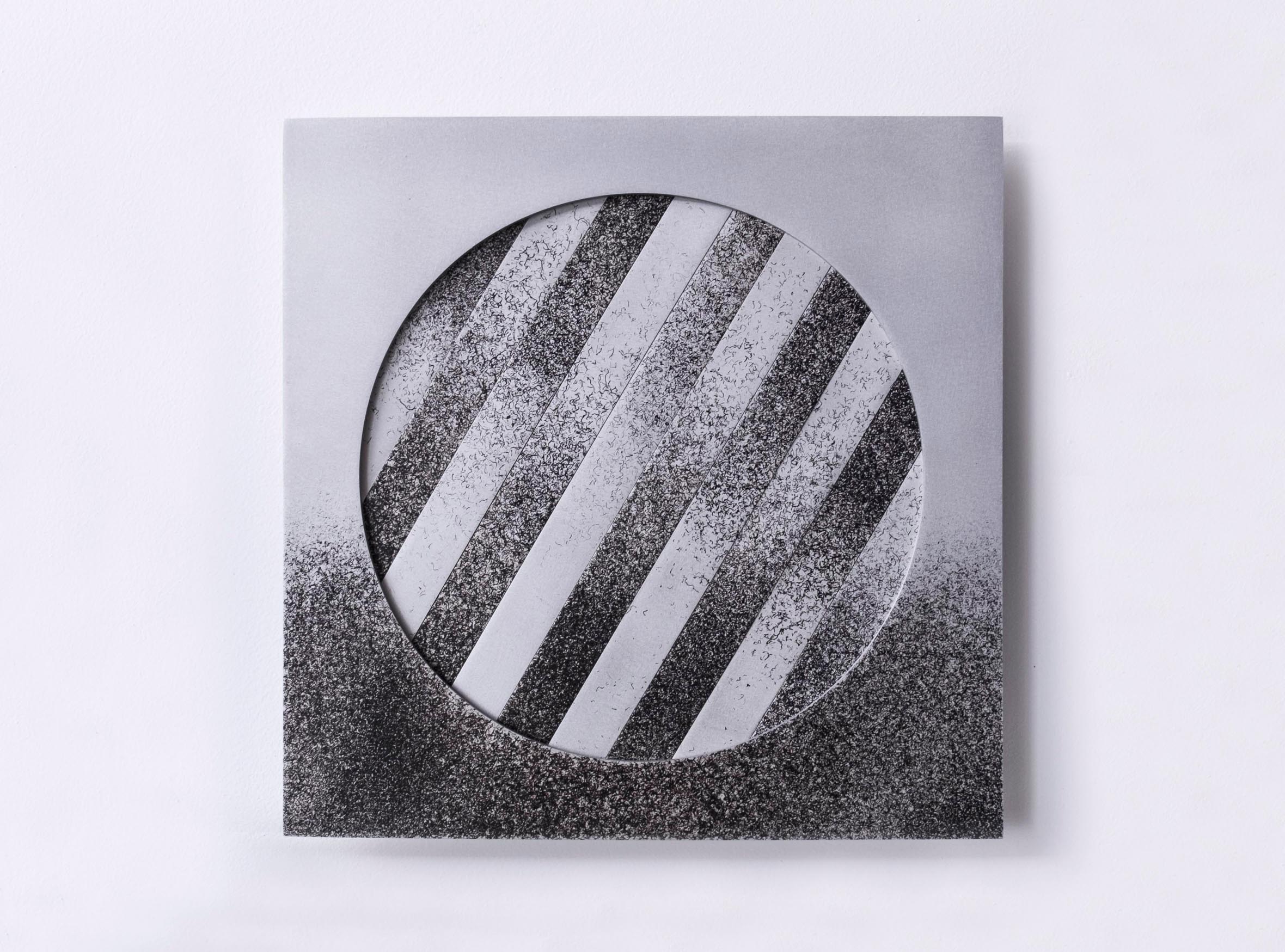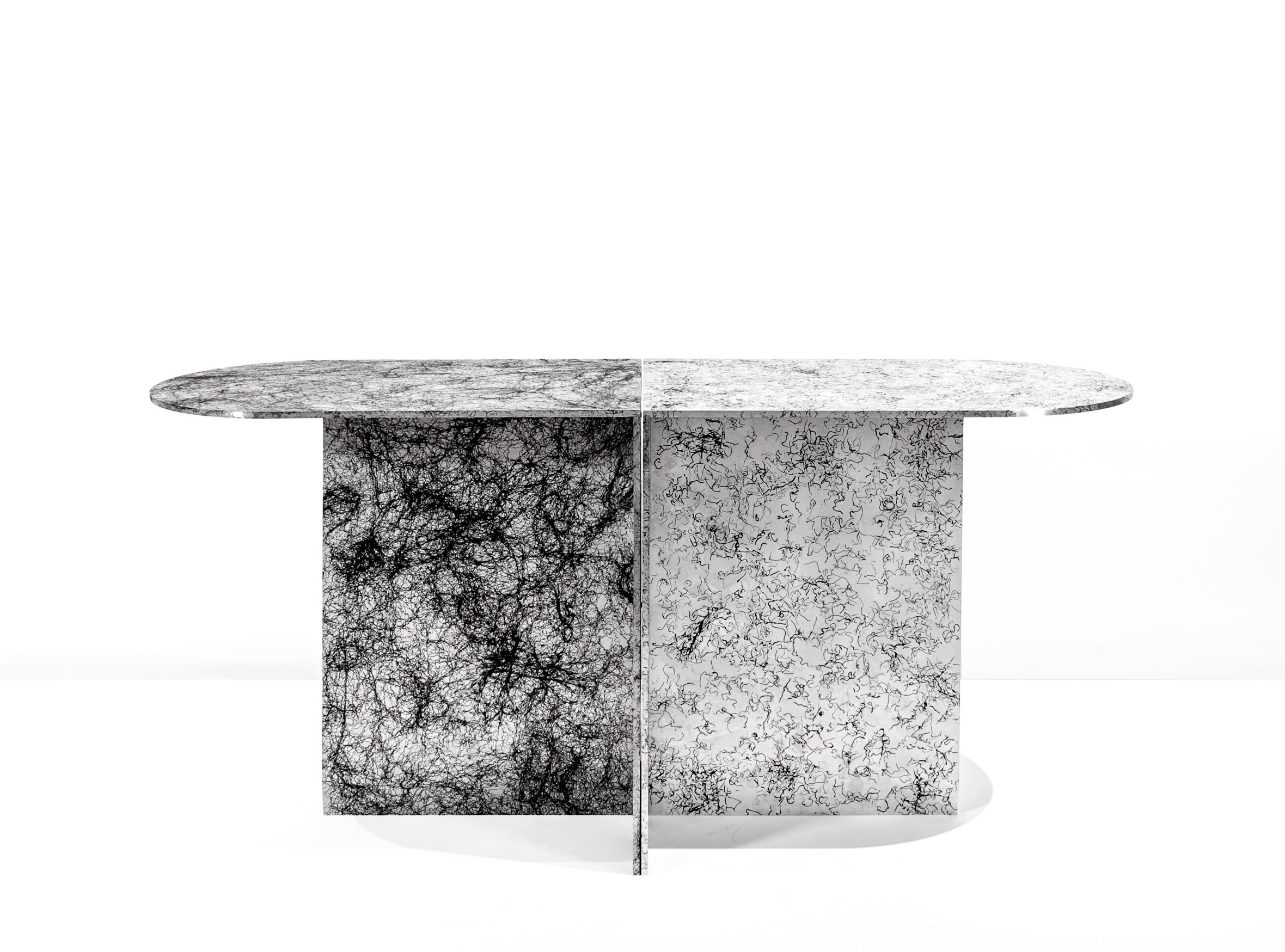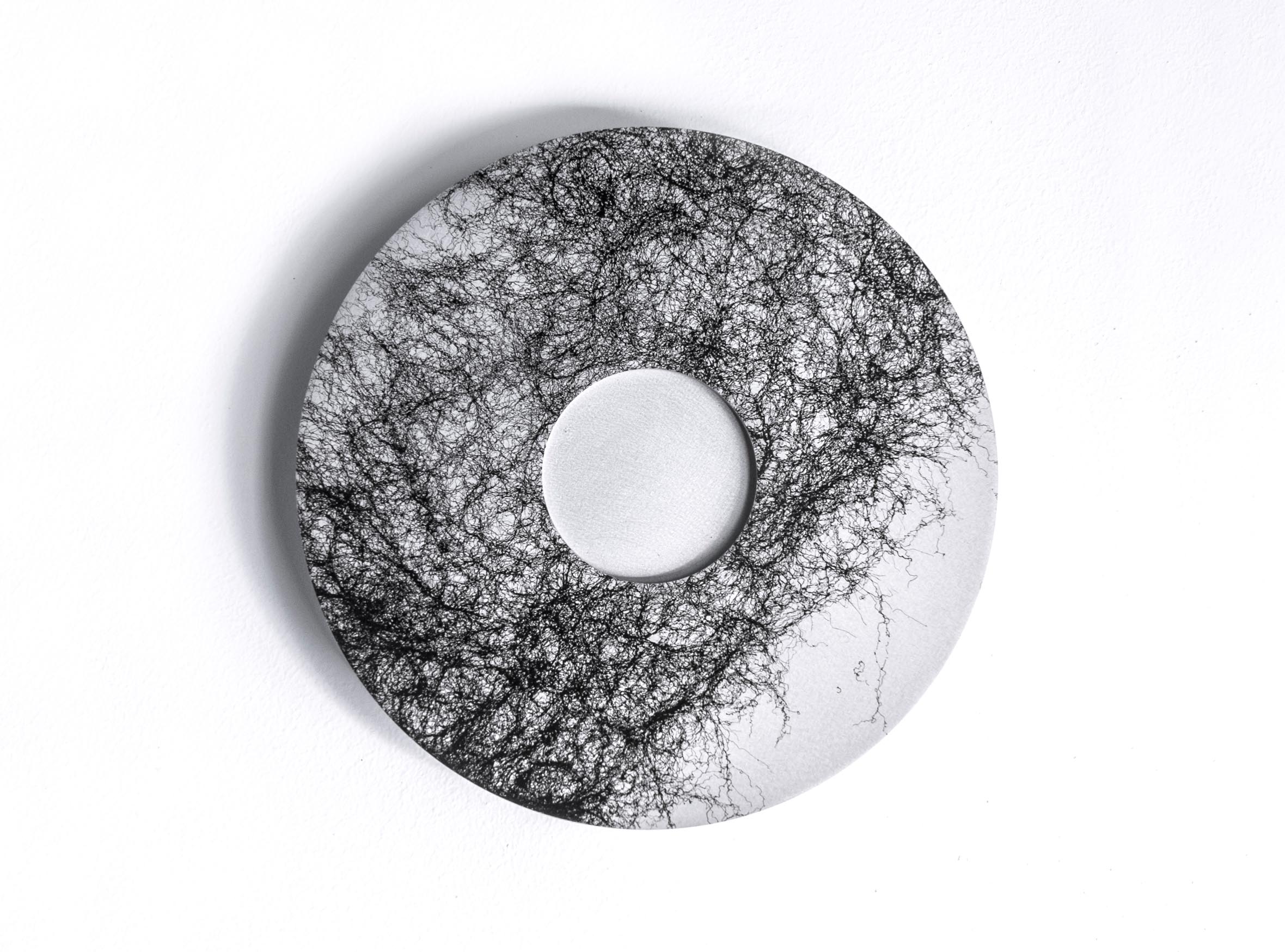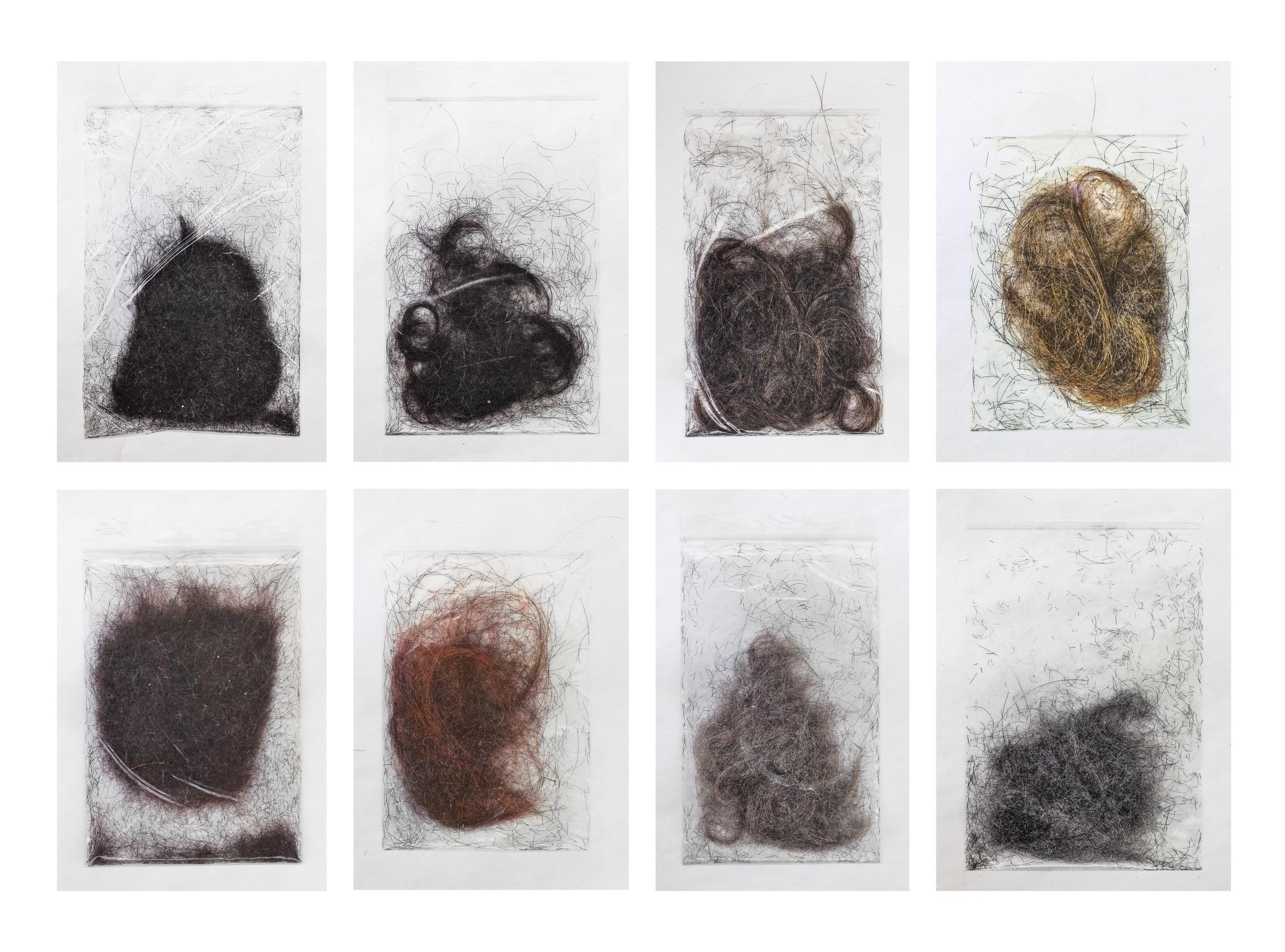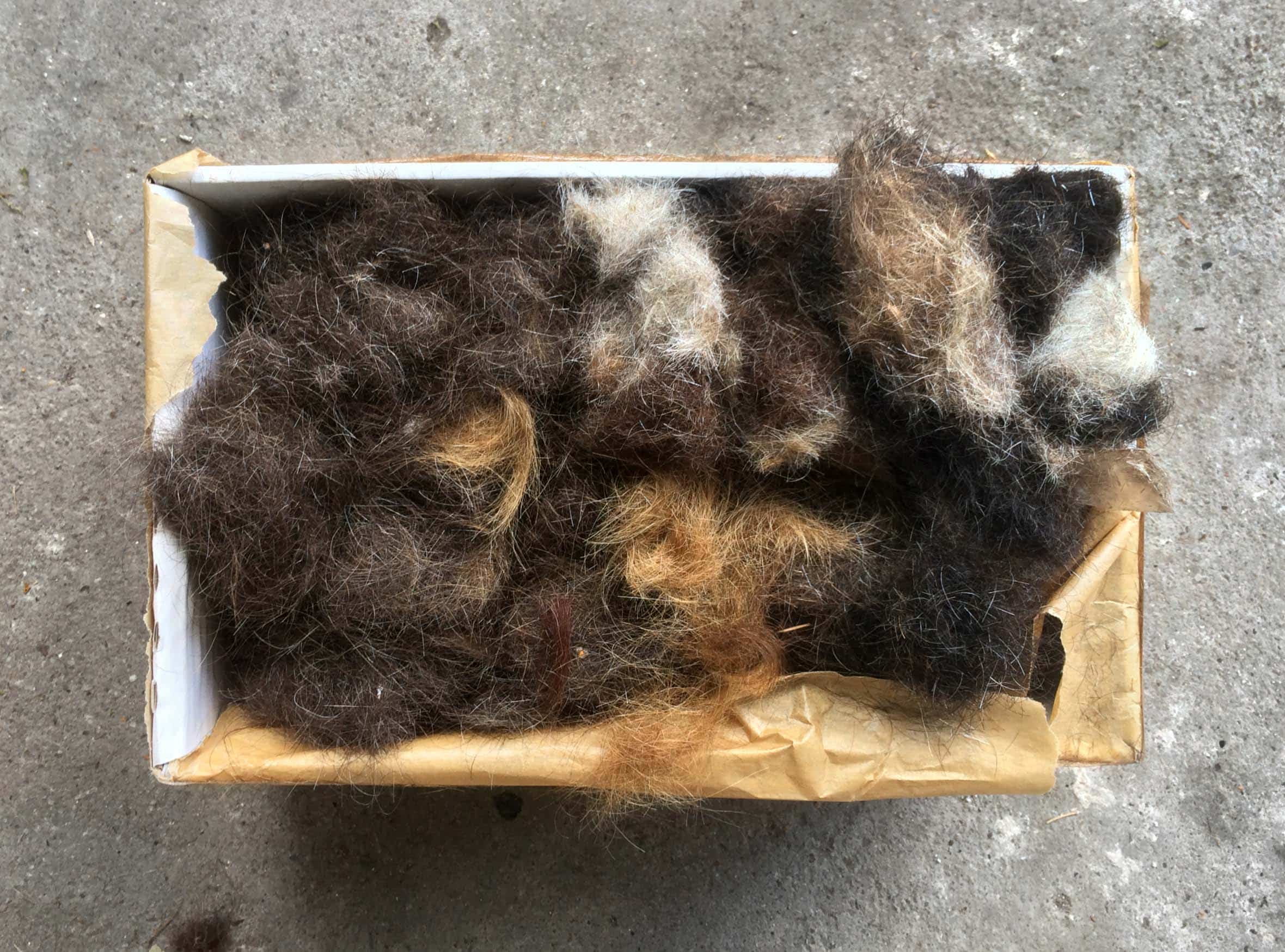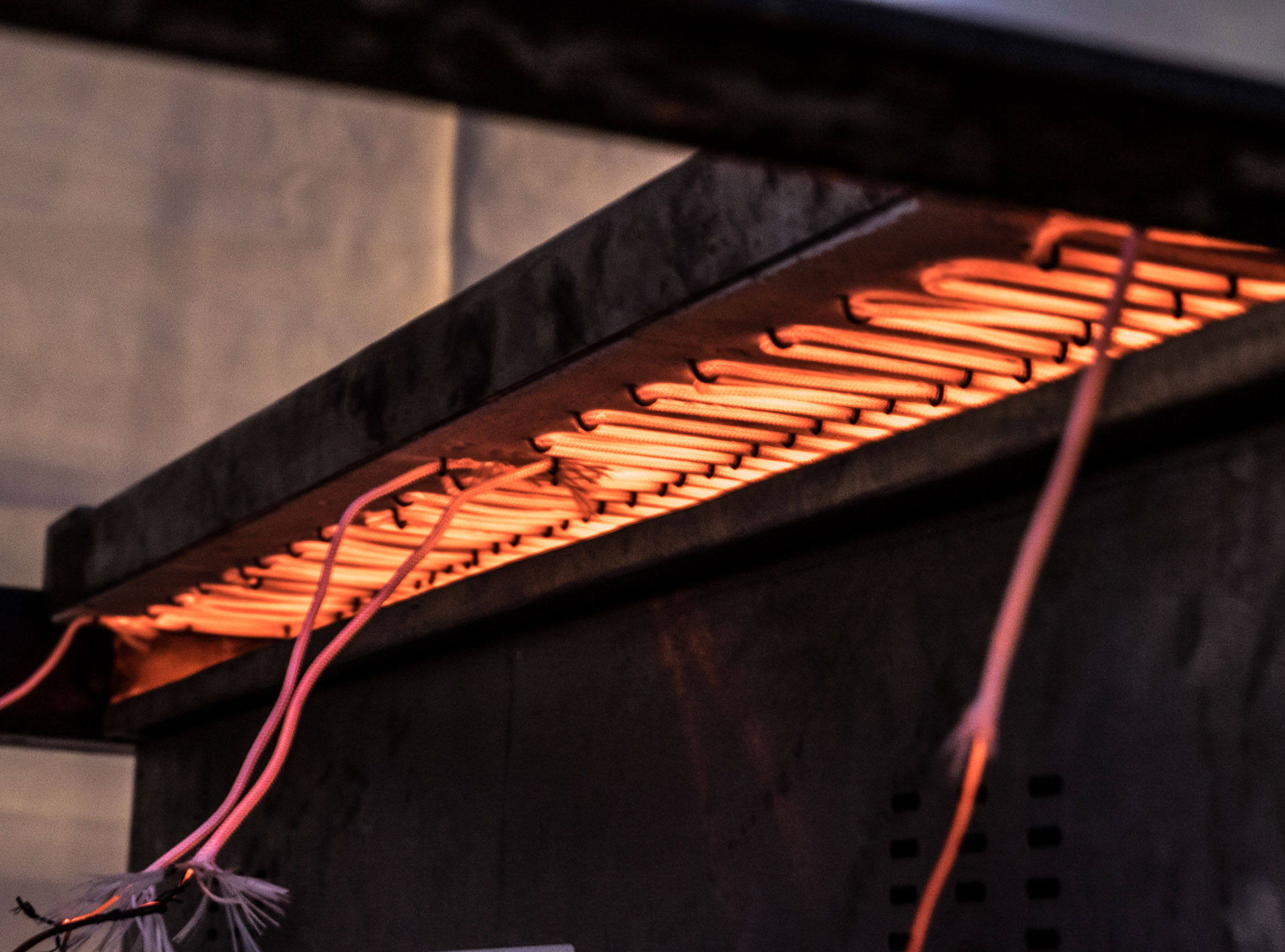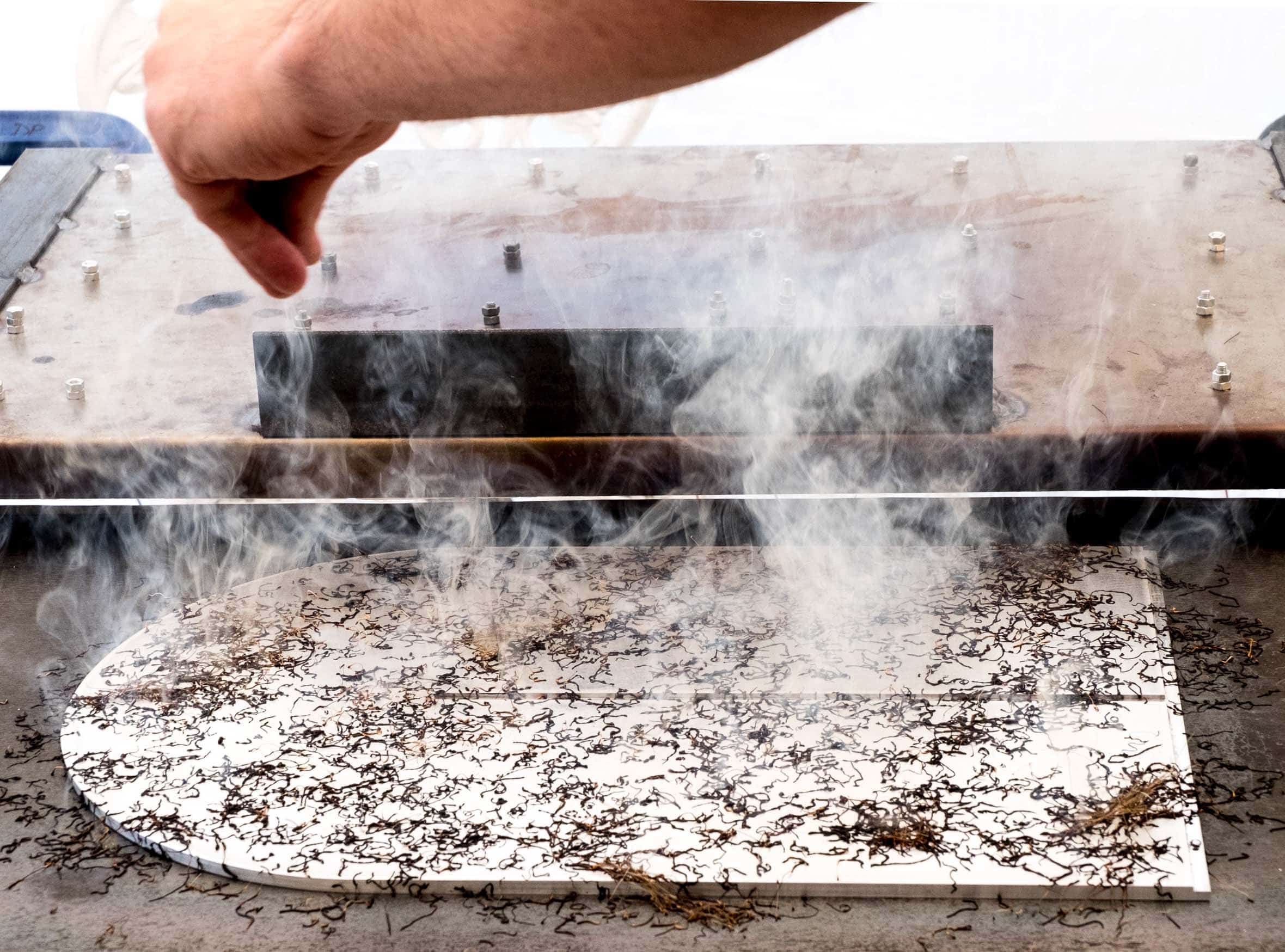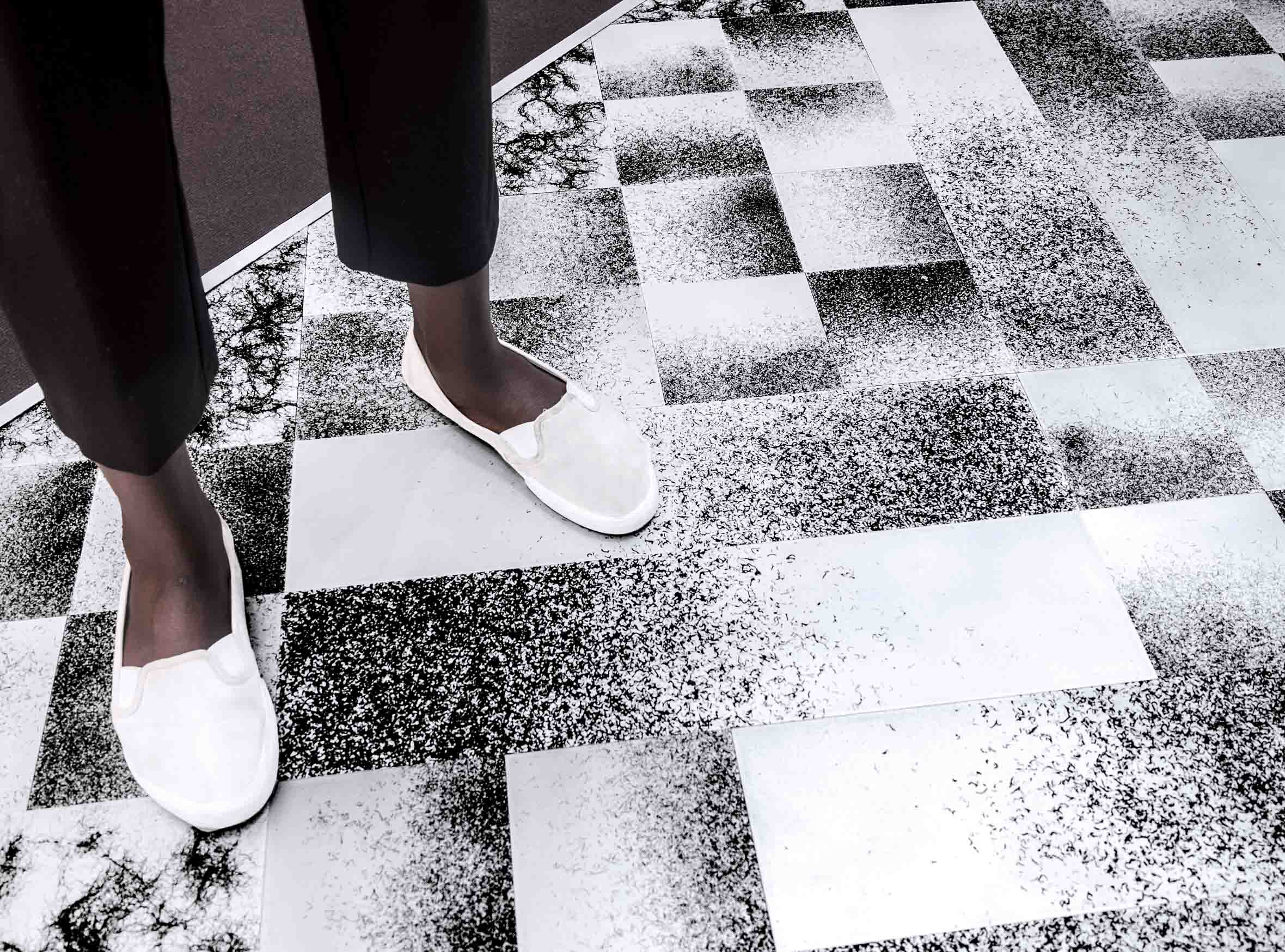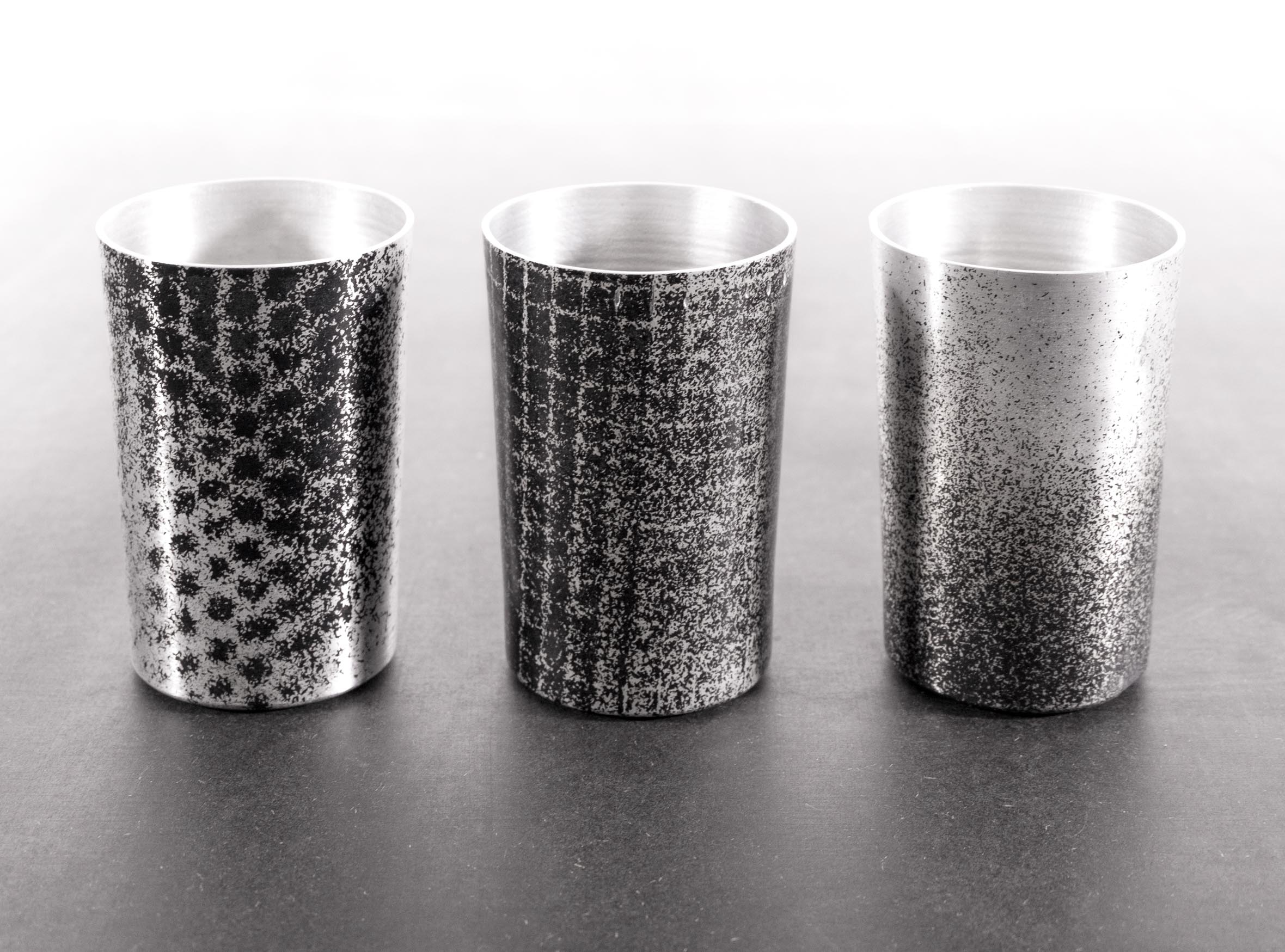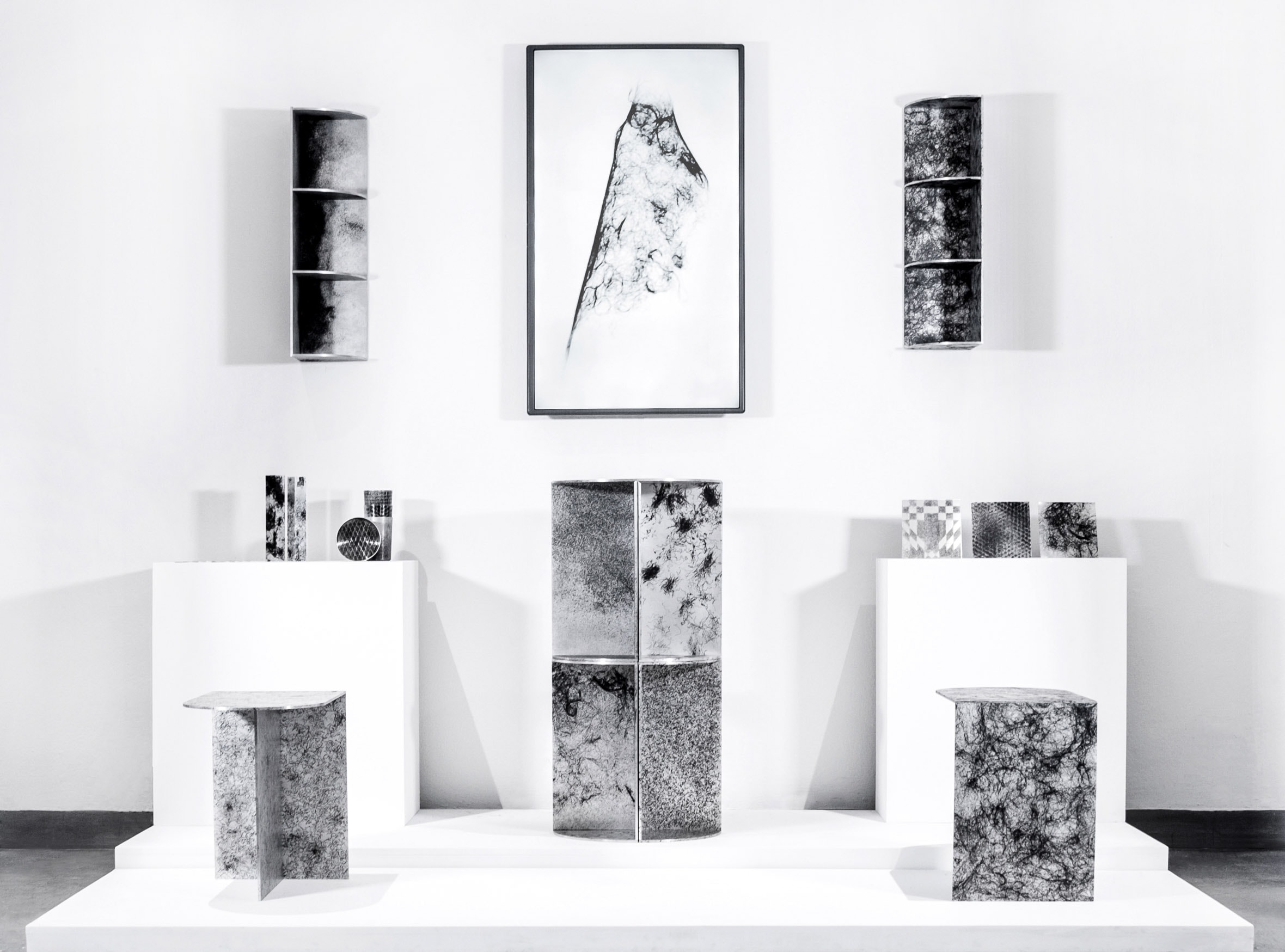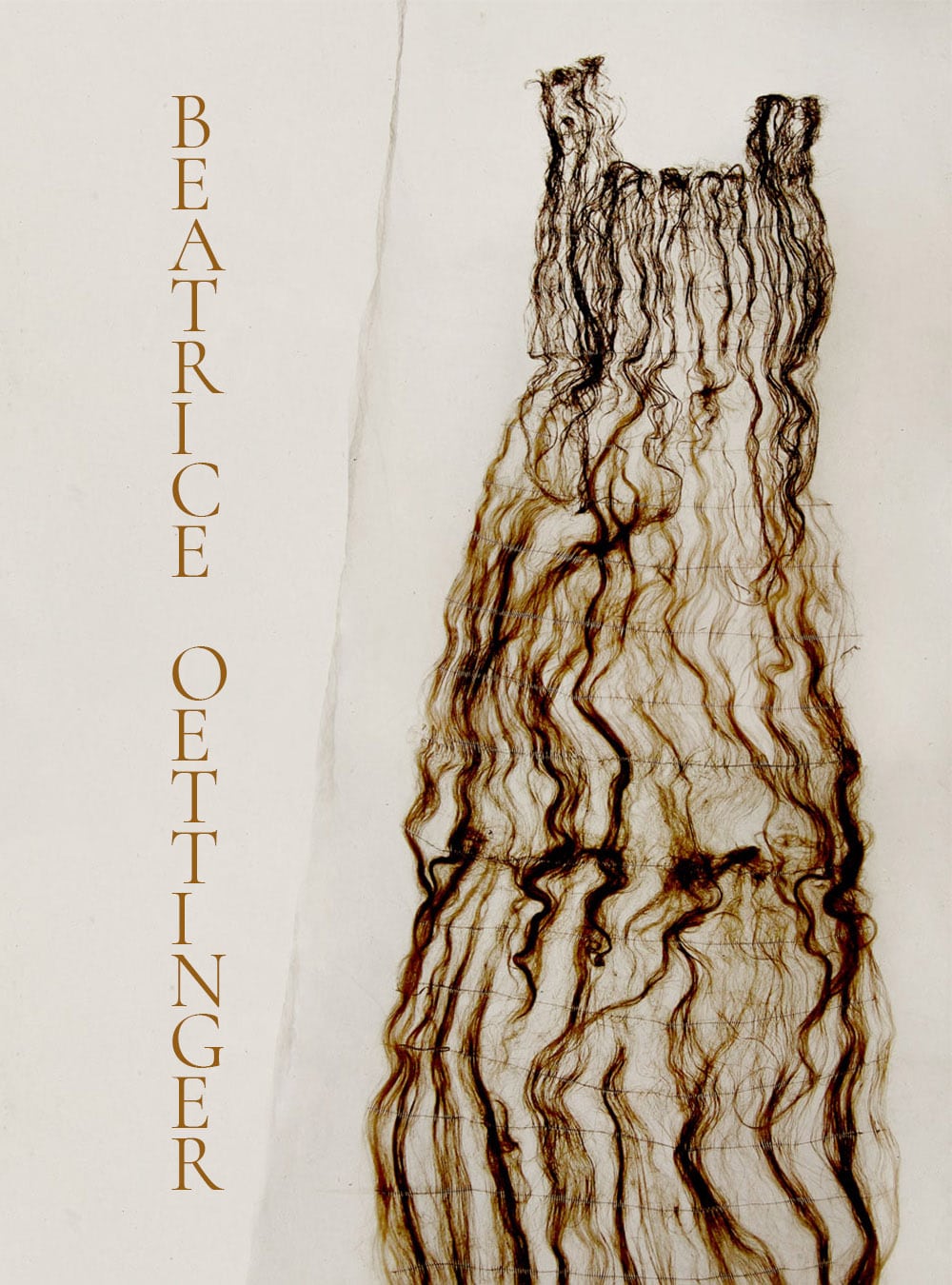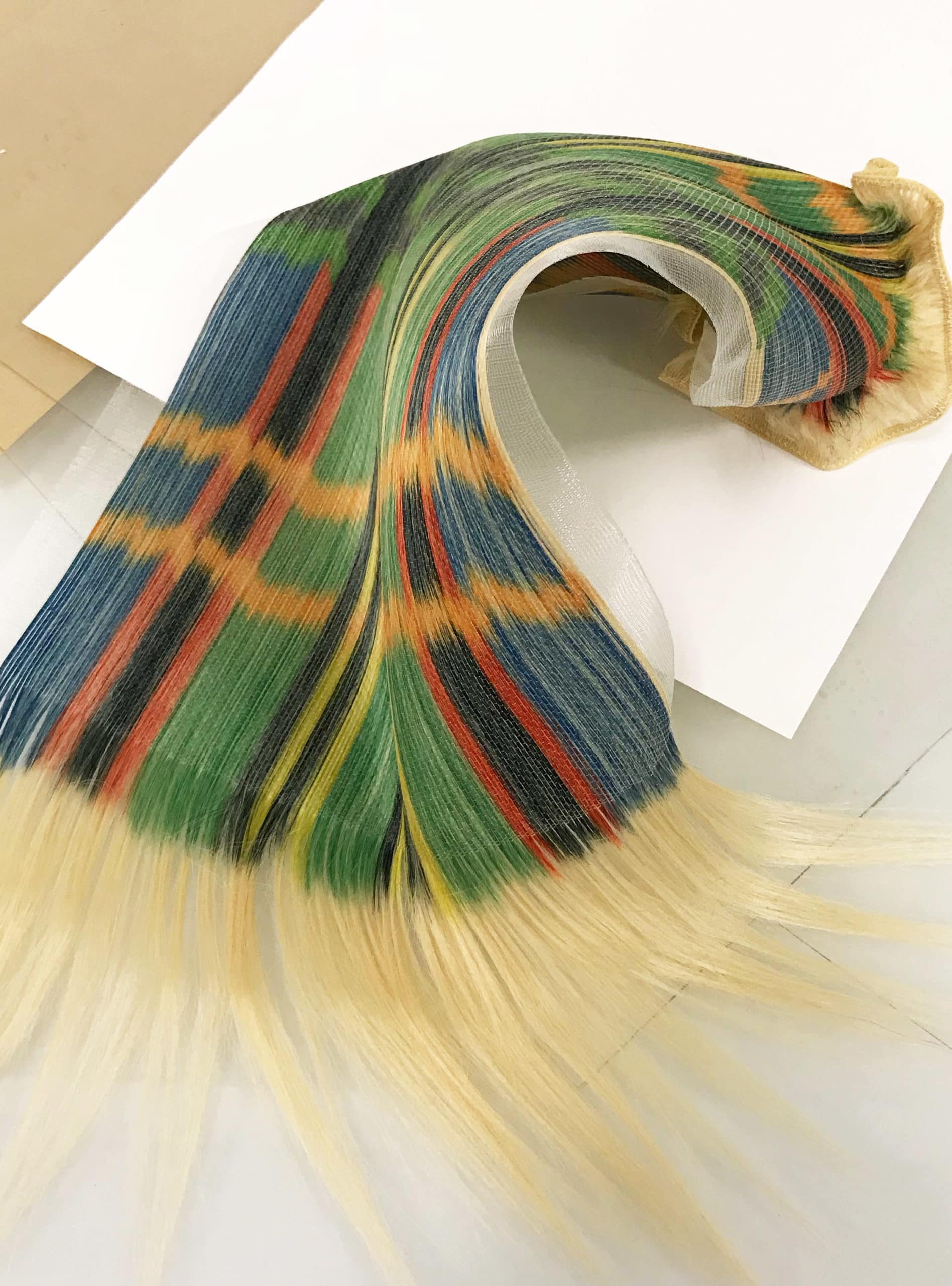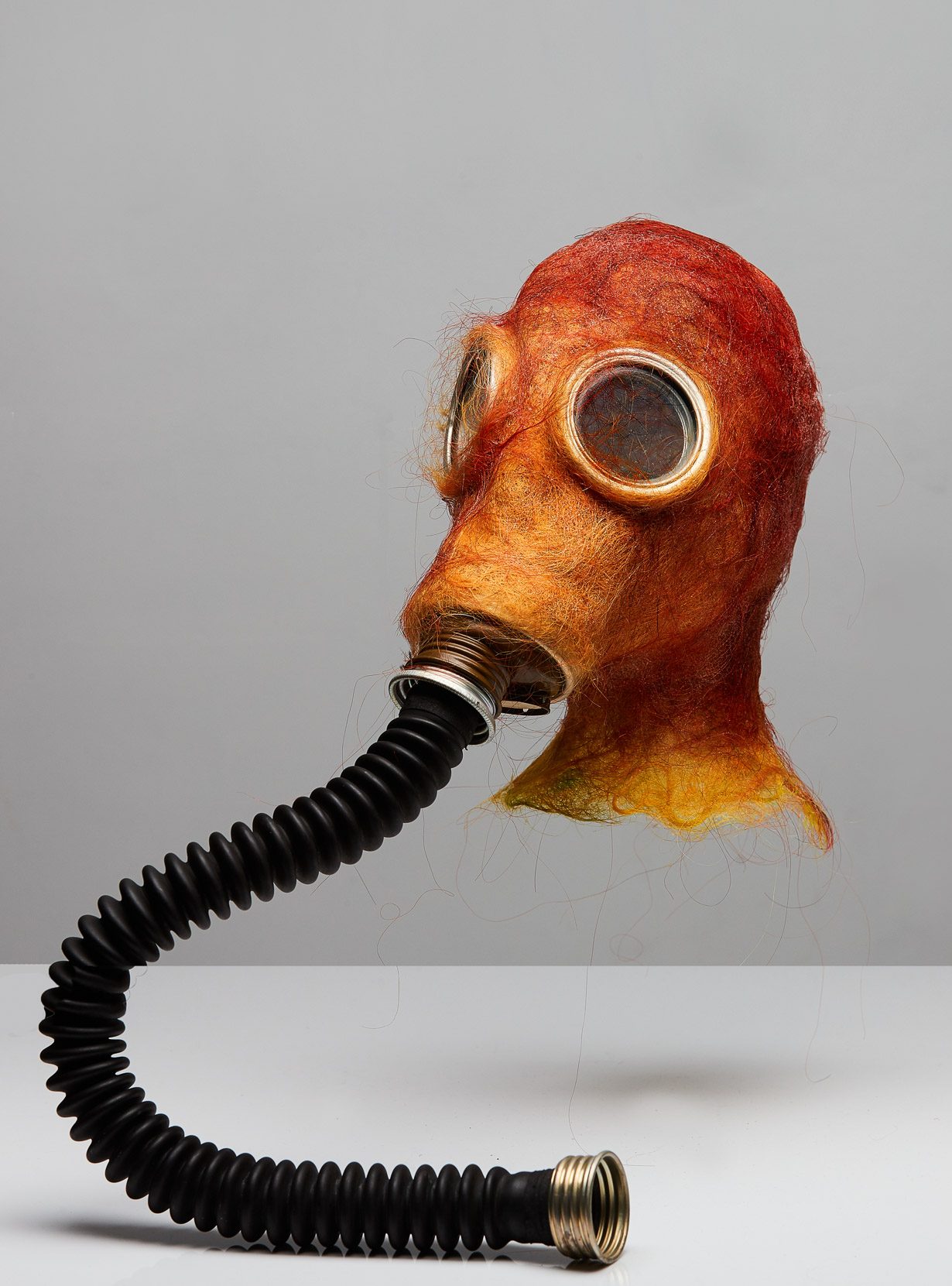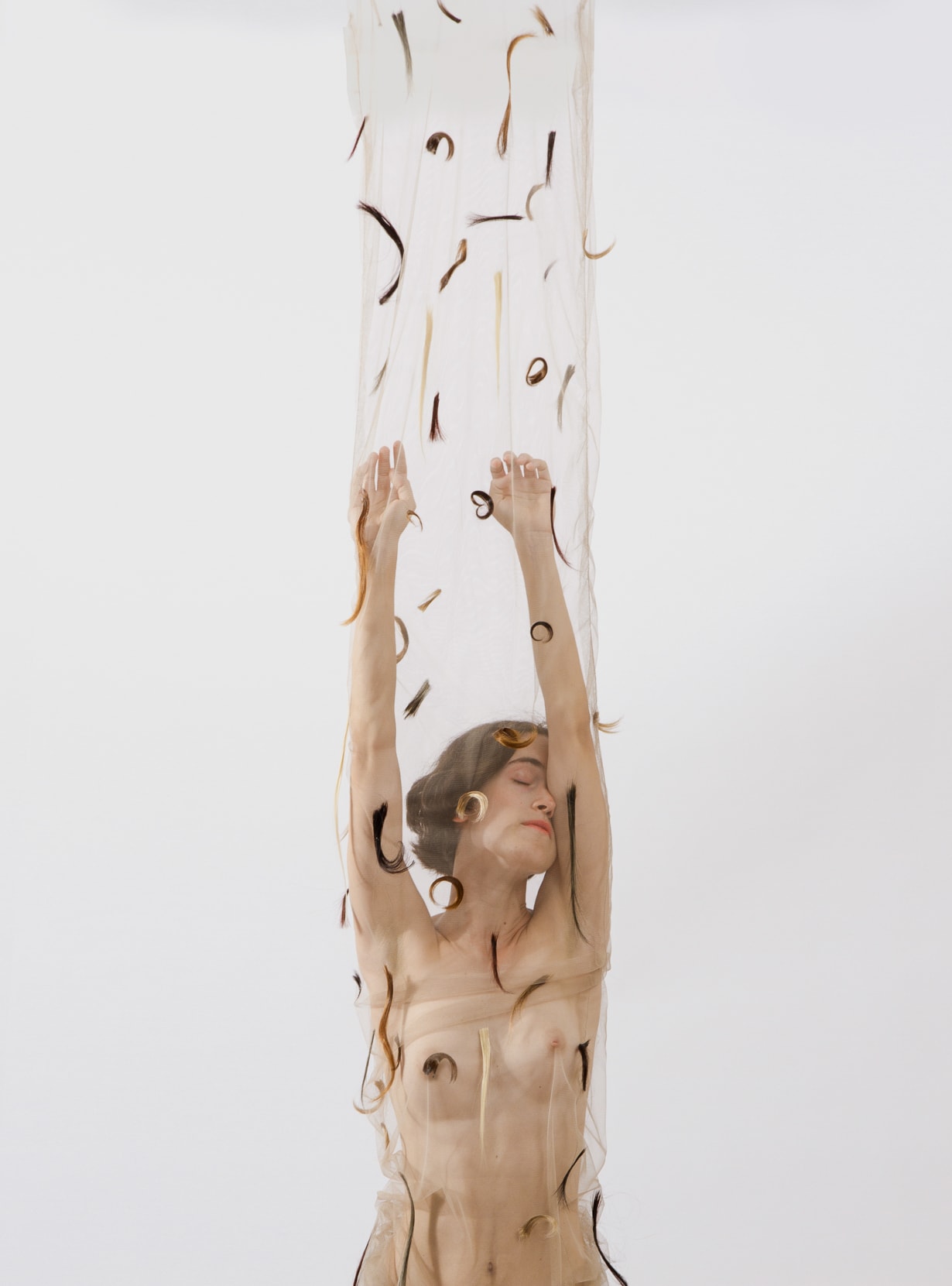PEOPLE: This innovative project transforms waste hair into a bespoke printmaking material
Images: Fabio Hendry + Martijn Rigters
Interview: Katharina Lina
Fabio Hendry and Martijn Rigters met in London at the Royal College of Art, while taking the Design Products Programme. As part of the programme, the duo started their project The Colour of Hair, an initiative that uses hair for sustainable surface treatments and decorations.
Hendry and Rigters started to collect hair from local hair salons and barbers, and repurposed the otherwise deemed debris in their innovative printmaking process. Interestingly, this creative duo doesn’t just use hair as it comes off a head, instead, they have invented a process in which the real star of the show is the residue that hair leaves behind. Due to the physical makeup of hair, it carbonises at once when put on a heated metal surface, leaving burn marks which, with a flair for design, can be drafted into gradients, shapes and motifs. In an effort to demonstrate the versatility of their floor and surface panel designs, The Colour of Hair collaborated with UK-based manufacturer Solomon & Wu to build an installation. On the other side of the world, the US-based office furniture provider Steelcase commissioned a series of table tops with various graphic patterns designed to be suitable for repetitive mass production. INFRINGE speaks to the duo about how the idea came to life and what else they’ve got in the works.
How did you get the idea to use hair for creating these textured surfaces? During our time in London we became aware of the enormous number of hairdressers surrounding us. Upon further research we found that hair as a material is purely considered a waste material, with over 500 hairdressers in London alone that “produce” this material on an enormous scale. At the same time, we wanted to start experimenting with the Raku technique – an old Japanese process that creates decoration on pottery. Taking inspiration from old techniques, like Raku, and modern printing techniques, like inkjet and screen printing, we developed a new way to create prints on a range of metals, like aluminium and brass.
What does hair offer as a medium that other mediums don’t? Due to the high level of keratin, the hair carbonises, and actually penetrates the surface of the material. Compared to other printing techniques – where the ink is added on top of a substrate – this technique is very durable and cannot be scratched off, as it is inside the surface.
Can you explain how it is more sustainable than other printing techniques? Hair is a material of extremes: displaying beauty but at the same time evoking distasteful emotions. Most people don’t know hair was actually used in the old days to create memorabilia – objects, like jewellery, to memorise loved ones. Hair has also been used in the art and design scene for a long time. We however wanted to take a different approach, by seeing the hair purely as a (waste) material. Something that surrounds us and can be repurposed to create beautiful objects. An important factor is that the hair itself is not there anymore, what you see is purely a carbon imprint of the fibres. Almost like a fossil.
“Due to the high level of keratin, the hair carbonises, and actually penetrates the surface of the material”
Did things go planned right away or were there any interesting trial and error findings? As with most processes that are developed in-house, a lot of trial and error is involved. From finding out the process worked on metal, it was still a long way to control and perfect the process. This involved creating a whole range of tools and machines for processing the fibres and applying them, as well as for heating up the printing surfaces.
What is the general reaction when people learn that hair is used to create these pieces? The reaction of the audience is diverse. From surprise and admiration to a funny giggle regarding the use of human hair. We approach it in a quite technical way – and this is usually as well how we try to explain the project to people – to think about the potential of waste materials, to think about the notion of materials and if these can be changed in a positive way.
You’ve made surface tiles and furniture. What else are you working on? Besides the surface tiles and furniture pieces, we are currently working on a range of smaller objects of desire. Like trays and jewellery, as well as testing new finishes of the aluminium.
- ANTHROPOLOGY OF HAIR
- ANTHROPOLOGY OF HAIR
- ANTHROPOLOGY OF HAIR
- ANTHROPOLOGY OF HAIR
- ANTHROPOLOGY OF HAIR
